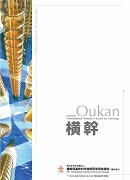Volume 10, Issue 1
Mini Special Issue on Prospects of Extensive System Design
Displaying 1-12 of 12 articles from this issue
- |<
- <
- 1
- >
- >|
Index
-
2016Volume 10Issue 1 Pages i-ii
Published: 2016
Released on J-STAGE: April 15, 2016
Download PDF (224K)
Preface
-
2016Volume 10Issue 1 Pages 3-4
Published: 2016
Released on J-STAGE: April 15, 2016
Download PDF (245K)
Reviews: Mini Special Issue on Prospects of Extensive System Design
-
2016Volume 10Issue 1 Pages 5-13
Published: 2016
Released on J-STAGE: April 15, 2016
Download PDF (942K) -
2016Volume 10Issue 1 Pages 14-21
Published: 2016
Released on J-STAGE: April 15, 2016
Download PDF (3663K) -
2016Volume 10Issue 1 Pages 22-37
Published: 2016
Released on J-STAGE: April 15, 2016
Download PDF (3246K) -
2016Volume 10Issue 1 Pages 38-46
Published: 2016
Released on J-STAGE: April 15, 2016
Download PDF (5042K)
Original Paper
-
2016Volume 10Issue 1 Pages 47-56
Published: 2016
Released on J-STAGE: April 15, 2016
Download PDF (1159K)
Topic
-
2016Volume 10Issue 1 Pages 57
Published: 2016
Released on J-STAGE: April 15, 2016
Download PDF (246K) -
2016Volume 10Issue 1 Pages 58-59
Published: 2016
Released on J-STAGE: April 15, 2016
Download PDF (2854K) -
2016Volume 10Issue 1 Pages 60-61
Published: 2016
Released on J-STAGE: April 15, 2016
Download PDF (887K)
Introduction of Member Society
-
2016Volume 10Issue 1 Pages 62-66
Published: 2016
Released on J-STAGE: April 15, 2016
Download PDF (1205K)
Editorial Essay
-
2016Volume 10Issue 1 Pages 67-68
Published: 2016
Released on J-STAGE: April 15, 2016
Download PDF (436K)
- |<
- <
- 1
- >
- >|
